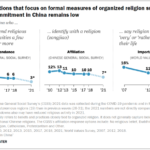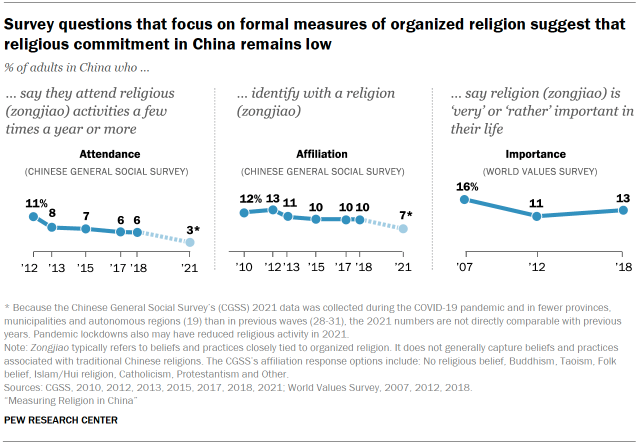World Role of China
Due to its enormous population and lengthy history, China is a crucial indicator of worldwide religious trends. Due to China diverse population and protracted cultural transition, its changing religious landscape is challenging to understand. Effective appraisal is complex due to the Communist Party’s secularism and the Chinese government’s information suppression. East Asia’s linguistic and religious variety complicates matters. The Pew Research Center hasn’t undertaken its poll on Chinese religious views and practices. However, our experts have examined data from many sources, including Chinese university surveys, to identify developing patterns.
The Variety of Faiths in China
Methodology strongly affects China’s religious population estimates. These estimates include religious people and spiritual seekers. According to the 2018 Chinese General Social Survey (CGSS), only 10% of Chinese were religious. In 2018’s World Values Survey, 13% of Chinese considered religion. Contrary to expectations, these numbers have not increased in a decade.
Extending Religious Terms
Spirituality, traditions, and superstitions elevate religion in China. One-third of Chinese adults are Buddhists or bodhisattvas, according to the 2018 China Family Panel Studies. According to a 2016 CFPS study, two-sixths of Chinese adults lit incense, sometimes with Buddha, bodhisattva, or other deity prayers. Only 4% of Chinese adults are Buddhist, making spirituality measurement difficult.
Language Issues
Language complicates Chinese religion. The Chinese word for “religion” is “zongjiao.” Chinese scholars translated Western texts into Chinese in the early 20th century. “Zongjiao” refers to Chinese religious institutions with funding for clergy and the state. This word rarely applies because scattered spiritual thoughts and behaviors in China are considered traditions or superstitions. The administration has also promoted the idea that religion is outdated and anti-socialist. Official rhetoric often indicates corruption and Communist Party disloyalty when “zongjiao” and “superstition” are combined.
Opinions differ
These fundamental differences make it impossible to quantify East Asian religions like China. Philosophy, culture, and religion sometimes merge in Buddhism, Confucianism, Shintoism, Taoism, and folk religions. Eastern faiths value congregational membership and sectarianism less than Western religions. East Asians combine several beliefs.
The Secret State Role in Religion
Chinese religion is hard to measure without government approval. The Chinese government recognizes several faiths. However, it monitors churches, ministers, and donations. Proselytizing or teaching religion to children is illegal. Since 2012, President Xi Jinping has tightened regulations and reduced exemptions for such behavior. Unrecognized minorities or alien religions face significant restrictions. Falun Gong is illegal.
Political Sensitivity Minefield
Political sensibility in Chinese religion goes beyond ideas and deeds. Specific associations, beliefs, and activities are less acceptable and less likely to be cited in polls. The government’s strict supervision of religious activity, especially unapproved groups, has exacerbated these issues. China may detain over a million Muslims, primarily Uyghurs, in the US. Bishops and priests of “house churches,” underground Catholic churches, imprisoned. These factors keep China at the top of official religious prohibitions.
In conclusion, language, culture, and politics complicate assessing religion in China. Religion and spirituality in China linked, making distinctions difficult. Religious debates are incredibly delicate in the current political climate, making completing studies and surveys harder.







